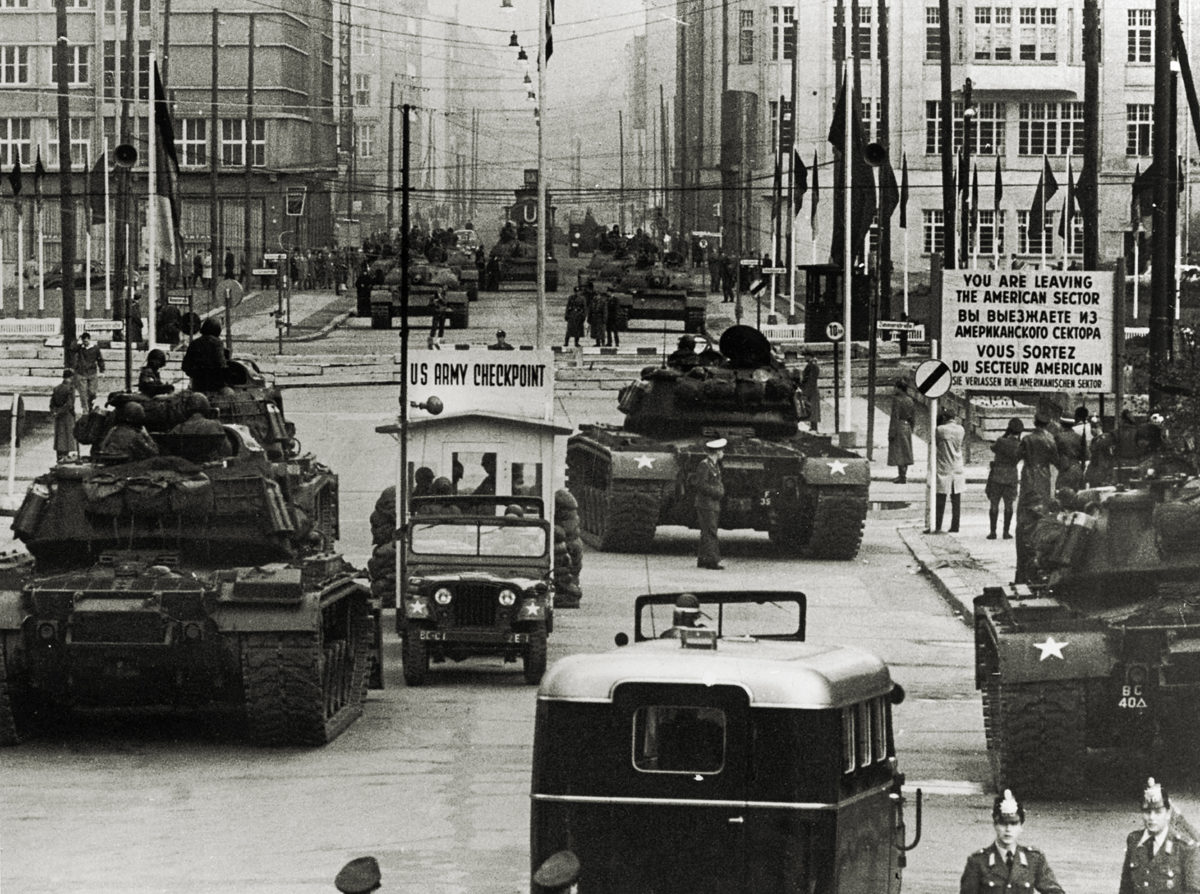Perhaps the closest the world has come to all-out nuclear war was on Oct. 27–28, 1961, as opposing rows of American and Soviet tanks faced off across the Checkpoint Charlie border crossing in divided Berlin, Germany.
By 1961 Soviet officials were desperate to stem the tide of emigrants flooding across the border from East Berlin to West Berlin, an oasis of capitalism in the midst of communist East Germany. Indeed, the Western powers subsidized cosmopolitan West Berlin specifically to serve as a beacon of freedom. The strategy worked, and at the height of the Cold War (1945–91) the unflattering comparison to drab dwellings on the communist side of the border represented an existential crisis for the Soviet Union.
That summer communist officials quietly mobilized Soviet and East German troops to wall off what till then had been a standard border crossing, adding barbed wire along sidewalks and roads. Furious at the unannounced construction, U.S. officials considered removing the obstacles with bulldozers but settled for testing Soviet enforcement of the restricted border. When the Soviets responded with tanks, the Americans did the same. Behind the scenes the opposing parties raised alert levels and readied nuclear weapons.
Though neither nation desired nuclear Armageddon, each took seriously the military threat posed by the other. The United States deployed Davy Crockett tactical nuclear recoilless rifles to West Berlin, and President John Kennedy entertained proposals for strategic “first strikes” should the Berlin crisis erupt into all-out war. Such strikes were intended to cripple the nuclear missile installations of the Soviets, who no doubt anticipated such tactics and were considering the same.
In the end, Kennedy and Soviet Premier Nikita Khrushchev reached a compromise: Construction on the wall could continue, but the Soviet tanks were to withdraw before the American tanks. Though Kennedy saved face, the Soviets got what they wanted, and a wall soon rose around West Berlin, its guard towers and trenches designed to keep people in, not out of, East Germany. “It’s not a very nice solution,” the president said, “but a wall is a hell of a lot better than a war.”
Berliners would remain forcibly separated until the wall finally came down in 1989.
historynet magazines
Our 9 best-selling history titles feature in-depth storytelling and iconic imagery to engage and inform on the people, the wars, and the events that shaped America and the world.






